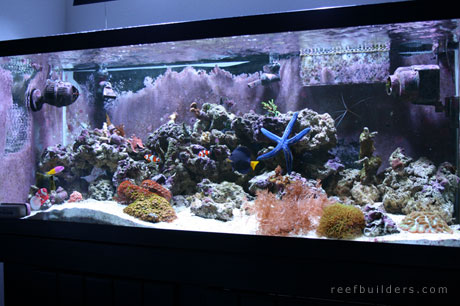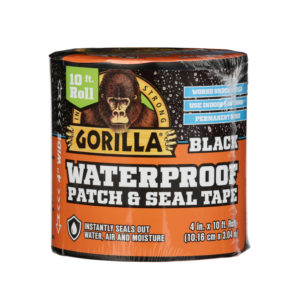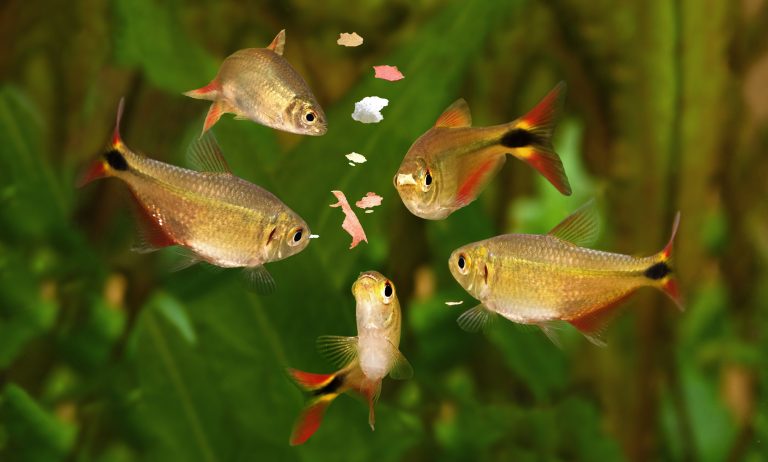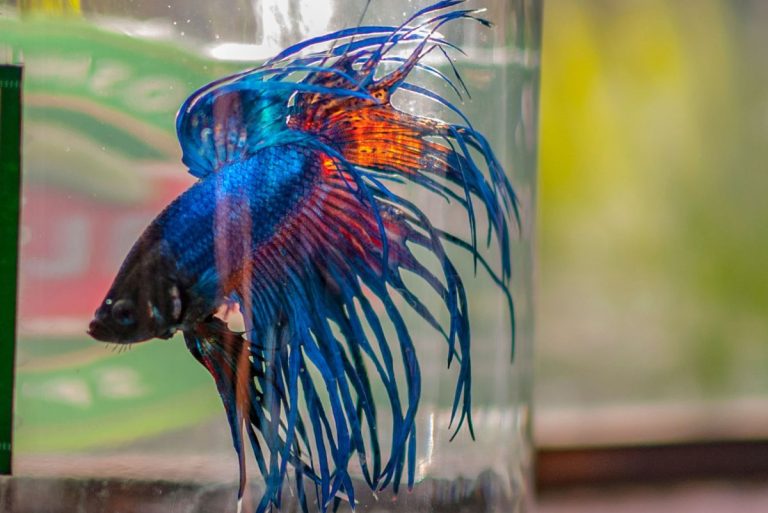Maximizing Your Space: How Many Fish Can You Put in a 75 Gallon Tank
You can typically put 20-25 small-sized fish or 10-12 medium to large-sized fish in a 75 gallon tank. A 75 gallon tank is considered a good size for intermediate aquarists who want to keep a variety of fish types and sizes.
The tank’s size allows for decent swimming space and ample surface area for air exchange, making it easier to maintain healthy water conditions. However, it’s important to note that fish compatibility and behavior patterns should also be considered when stocking a tank to prevent aggression, overpopulation, or stress.
Overstocking a tank can lead to poor water quality, increased maintenance, and risk of disease. Therefore, it’s important to research and plan ahead before deciding on which fish to include in a 75 gallon tank.
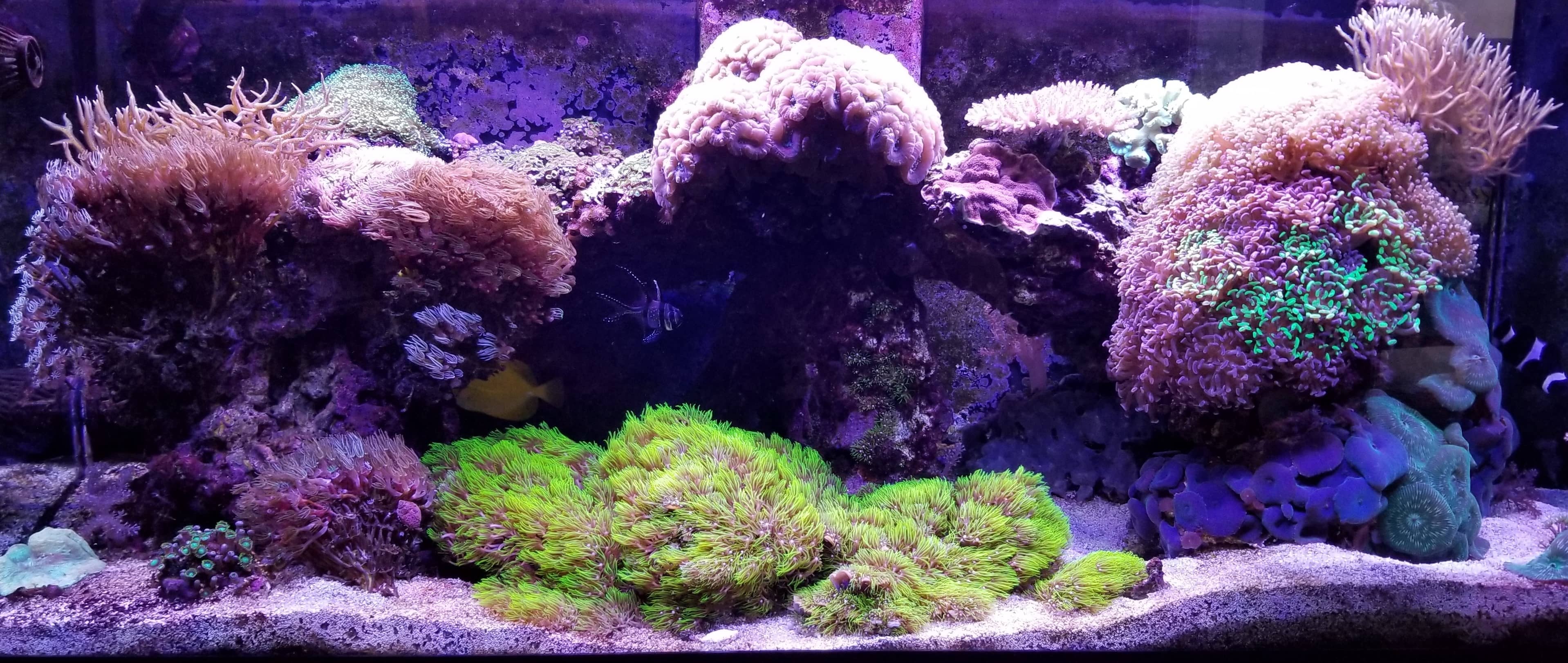
Credit: reefsump.com
Factors To Consider
Deciding on the number of fish to put in your 75-gallon tank can be tricky. Several factors come into play, and it’s essential to understand how each one affects the quantity of fish you can keep. The following sections discuss these factors in detail.
Tank Size
The size of the fish tank is one of the essential aspects to consider when determining how many fish to keep. A 75-gallon tank can accommodate more fish than smaller tanks, but the number of fish put in it should be reasonable.
Overcrowding can lead to unhealthy living conditions for the fish, causing illness and even death. Based on the size of your fish, calculate an appropriate space allowance, and ensure that you don’t exceed it.
Fish Behavior
Each fish species has different behavioral patterns and habits that affect the number you can keep. Some fish are territorial and require more space, while others are schooling and should be stocked in groups. Certain fish are aggressive and cannot coexist with other species, while others are peaceful and thrive in a community tank.
Understanding your fish’s behavior is critical to providing a healthy living environment.
Fish Size
The size of the fish and its growth rate directly affects the quantity you can stock in your tank. As fish grow, they need more space to swim around. Therefore, the number of fish you can keep in your tank will change as your fish mature.
Overcrowding can cause various health issues, such as stunted growth, weakened immune systems, and stress, reducing the fish’s lifespan.
Filtration System
The filtration system plays an essential role in ensuring a healthy living environment for your fish. A strong filtration system removes waste and toxins from the water, allowing the fish to thrive. The number of fish in your tank will impact the efficiency of the filtration system.
Overcrowding can lead to an insufficient filtration system, causing ammonia and nitrite levels to rise dangerously high.
Water Quality
Maintaining clean water is vital to the health of your fish. Overcrowding can lead to poor water quality because of the increased waste produced by the fish. Add the waste from uneaten food, and the water quality deteriorates rapidly. Poor water quality can cause sickness, disease, and even death.
Therefore, it’s vital to keep a healthy ratio of fish to water volume.
Fish Compatibility
Fish compatibility is an essential factor to consider when choosing which species to keep together. Not all fish get along, and if you have incompatible species in your tank, it can lead to aggression and injuries. Also, different species have different needs in terms of water temperature, ph levels, and more.
Therefore, ensure that you research each species you want to keep to ensure that they can coexist peacefully.
Types Of Plants
Plants serve various purposes in a fish tank, such as removing excess nutrients and providing oxygen. However, they also occupy space, limit sightlines, and can reduce the number of fish you can keep in your tank. Selecting the right plants is essential to ensure that your fish thrive, and you can maintain a reasonable number.
Type Of Substrate
Substrate, such as sand or gravel, plays a vital role in keeping your tank healthy. It provides surfaces for beneficial bacteria to grow that break down fish waste and help maintain a healthy environment. The type of substrate you choose will impact the number of fish you can keep, the quality of the water, and the health of your fish.
Type Of Fish Food
The type of fish food and quantity you feed your fish will impact the fish’s waste production. Overfeeding leads to increased waste and poor water quality. Therefore, it’s essential to feed your fish the recommended amount of food and avoid overfeeding.
Fish Health
The health of your fish is a vital consideration when determining the number of fish to keep. Overcrowding can lead to stress and weakened immune systems, making fish more prone to disease and illness. Regular observation of the fish and prompt treatment of any illnesses is essential to maintain a healthy fish community.
Several factors come into play when determining the appropriate number of fish to keep in a 75-gallon tank. Ensure that you consider all the elements discussed above, choose compatible species, and maintain healthy water conditions. This will ensure that your fish thrive.
Ideal Fish Combinations For A 75 Gallon Tank
The Importance Of Choosing The Right Fish Combination For Your 75-Gallon Tank
When it comes to setting up a 75-gallon tank, choosing the right fish combination is crucial to ensure optimal fish health and well-being. Overcrowding or mixing incompatible fish can result in territorial conflicts, stress, and disease. Therefore, selecting the right fish species that can coexist peacefully in a 75-gallon tank can make all the difference.
Popular Fish Combinations For A 75-Gallon Tank
Here are some ideal fish combinations for a 75-gallon tank:
- Red-tail sharks, rainbow sharks, corydoras, and angelfish: These species can share a tank without significantly bothering each other, and they all thrive in similar water conditions.
- Dwarf gouramis, neon tetras, and german blue rams: This fish combination creates a vibrant and dynamic display of color that is appealing to the eye. These species are also relatively peaceful and easy to care for.
- Silver dollars, congo tetras, and bristlenose plecos: With their similar water temperature and ph requirements, these fish make excellent tank mates. Silver dollars and congo tetras are active swimmers, and bristlenose plecos’ presence provides a unique aesthetic touch to this fish combination.
- Discus, cardinal tetras, and otocinclus catfish: This combination is quite unique and visually attractive. Discus is the centerpiece fish, while cardinal tetras add color and vibrancy. Otocinclus catfish serve as bottom dwellers and can help keep the tank clean.
Factors To Consider When Choosing Fish Combination For Your 75-Gallon Tank
When deciding which fish species to include in your tank, keep in mind the following:
- Size: Avoid combining fish species with a significant size difference, as larger fish may bully or even eat smaller ones.
- Aggressiveness: Some fish species are known to be more aggressive, and as such, do not mix well with some other fish. It’s essential to research the temperament of the fish species you’re considering before adding them to your tank.
- Living conditions: Fish require specific living conditions to thrive, such as water temperature, ph level, and oxygen level. Make sure the fish species you choose share similar living conditions requirements.
- Activity level: Some fish species are more active than others, and mixing low-activity fish with highly active ones can cause stress, harassment, and territorial conflicts.
By taking these factors into account and following the recommended fish combinations for a 75-gallon tank, you can create a beautiful, thriving aquatic environment for your fish.
Calculating How Many Fish Can Fit In A 75 Gallon Tank
Are you considering adding some fish to your 75 gallon tank and wondering how many you can add without overcrowding it? A crowded tank can lead to health problems or even death for your fish. It’s essential to determine the appropriate number of fish for your tank to keep them happy, healthy, and thriving.
In this blog post, we will discuss how to calculate how many fish can fit in a 75-gallon tank and how to prevent overcrowding.
Discuss How To Make Sure You Do Not Overcrowd Your Tank
Before we dive into the formula to calculate the number of fish you can add to your 75-gallon tank, let’s talk about how to prevent overcrowding in the first place. Here are some tips to help you make sure you don’t add too many fish to your tank:
- Research the fish you want to add and understand their adult size and behavior to ensure they are compatible with your tank and other fish.
- Use the one-inch-per-gallon rule as a general guide for the number of fish you can add. For example, a 75-gallon tank can have up to 75 inches of fish, but keep in mind that some fish require more space than others.
- Avoid adding too many fish at once, as it can disrupt the tank’s ecosystem, leading to stress and health problems for your fish.
- Regularly test the water quality and maintain appropriate water parameters, such as temperature, ph level, and ammonia levels.
Provide A Simple Formula For Calculating The Number Of Fish You Can Put In A 75-Gallon Tank
A simple formula to calculate the number of fish you can add to your 75-gallon tank is:
- Determine the average adult size of the fish you want to add.
- Convert the adult size to inches and add up the total inches of all the fish you want to add.
- Divide the total inches by 12, which will give you the number of fish you can safely add to your tank.
For example, suppose you want to add six adult angelfish to your 75-gallon tank. The average adult size of an angelfish is six inches. Therefore, your total inches would be 6 x 6 = 36 inches per fish, resulting in a total of 216 inches (36 x 6) for all six fish.
When you divide this by 12, you will know how many fish you can add to your tank, which is 18 fish.
Remember, this is just a general guideline, and you should take into account the specific needs and behavior of the fish you want to add to your tank. Always research the fish you want to add and consult with a professional if you are unsure, to ensure that your fish stay healthy and happy.
Maintenance Tips For Your 75 Gallon Tank
As a responsible fish owner, you should prioritize the maintenance of your 75-gallon tank. Keeping your tank environment clean and healthy is essential for the well-being of your fish. In this segment, we will provide you with some useful tips to maintain your 75-gallon tank.
Provide Specific Maintenance Tips To Keep The Fish And Tank Environment Healthy.
Here are maintenance tips to keep your fish and tank environment healthy:
- Keep a regular cleaning schedule: Regular cleaning is necessary for healthy fish and a clean tank environment. Maintaining a regular cleaning schedule can help in controlling the growth of algae and bacteria in the tank. Clean the tank and replace the water every two weeks.
- Check the water temperature: The temperature of the aquarium water should always be optimal for your fish’s health. Maintain a consistent temperature of around 75-80 degrees fahrenheit.
- Monitor water ph level: The ph level of the water should be between 6.5-8.2. Check the ph level frequently, and consider adding chemicals like ph buffers or ph decreasers to keep the water ph level healthy.
- Don’t overfeed your fish: Overfeeding your fish can create uneaten food and waste, leading to an unhealthy fish environment. Feed your fish in controlled portions twice a day.
- Keep an eye on fish behavior: Keep an eye on your fish’s behavior. Unusual behavior can be a sign of sickness or a problem in the environment.
- Consider live plants and rocks: Live plants and rocks can help in naturally removing waste and making the environment suitable for your fish.
- Use a gravel vacuum: Regular cleaning and using a gravel vacuum will remove the dirt and uneaten food that can accumulate at the bottom of the tank.
- Avoid overstocking: Overcrowding the tank with too many fish can cause poor water circulation and a lack of oxygen for your fish’s health. Follow the general rule of thumb of one inch of fish per gallon of water.
- Maintain the filtration system: The aquarium filtration system is essential for keeping the water clean and healthy for your fish. Make sure to change the filter on a regular basis.
- Test the water: Test the aquarium water regularly to maintain the healthy environment for your fish. Use a water test kit to monitor the water’s ph level, ammonia, nitrate, and nitrite levels.
By following these maintenance tips, you can ensure a healthy environment for your fish and a beautiful 75-gallon aquarium display.
Frequently Asked Questions Of How Many Fish Can You Put In A 75 Gallon Tank
How Many Fish Can You Put In A 75 Gallon Tank?
It depends on the size and types of fish but typically 10-12 medium-sized fish.
What Happens If You Overstock Your Aquarium?
Overstocking your aquarium can cause health issues, stress, and even death among the fish.
How Can You Calculate The Right Number Of Fish?
Measure your tank’s dimensions and surface area, then consider the size and behavior of each fish.
What Are Some Common Mistakes To Avoid When Stocking A Tank?
Avoid adding too many fish at once, overcrowding, and not researching fish compatibility. Also, regularly clean the tank.
Conclusion
Determining how many fish can fit comfortably in a 75 gallon tank is a crucial aspect of fishkeeping. It is important to keep in mind the type and size of fish you plan to keep, their behavior, and their specific needs.
Overcrowding a tank can put the well-being of your fish in jeopardy, leading to stress, disease, and even death. Additionally, inadequate space can also affect the overall quality of your aquarium’s water, causing harm to both your fish and the ecosystem of your tank.
It’s always best to consult with an expert before stocking your aquarium. Taking the time to learn about the specific requirements of your fish will ensure a healthy and thriving aquatic environment. Remember, responsible fishkeeping not only benefits the well-being of your aquatic pets, but it also enhances the beauty and appeal of your aquarium.
